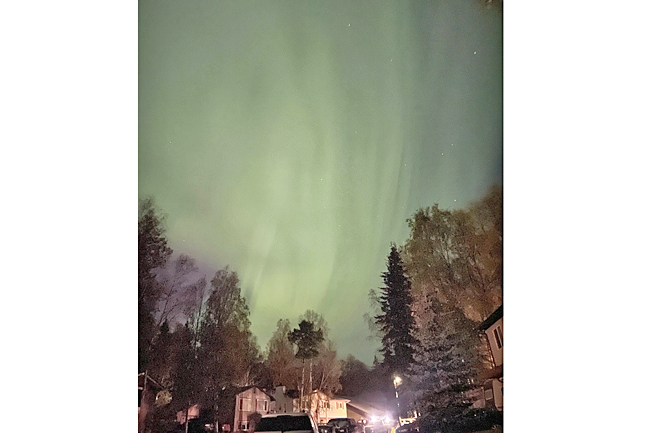AFP – Stargazing and seeing a multitude of these tiny glowing entities in the sky is becoming an increasingly rare occurrence.
Do you feel a twinge of nostalgia when you recall childhood evenings spent admiring the starry skies? If the answer is yes, you’re most likely suffering from “noctalgia”, a term coined by astronomers that has also been described as meaning “sky grief”.
Light pollution is becoming an issue in a growing number of places, and the number of stars visible to the naked eye at night in some places could be halved in less than 20 years, according to a scientific study published in January in the journal Science.
While astronomers lament this phenomenon, two of them have attributed a term to it: “Noctalgia”. “We offer here the term noctalgia to express ‘sky grief’ for the accelerating loss of the home environment of our shared skies, a disappearance felt globally and deserving of its own field of study of ‘nyctology’,” write Professor of Physics and Astronomy at the University of San Francisco (California, the United States) Aparna Venkatesan and astronomer John Barentine, in a letter published in August on the Science publication website.
The researchers stress the loss of a common heritage centred around the starry sky and its knowledge.

While the stars are not disappearing from the sky per se, they are being obscured by the artificial skyglow associated with human activity and reflected in the sky.
According to the study cited above, trends observed in the data show that the average night sky brightened by 9.6 per cent per year between 2011 and 2022, equivalent to a doubling in sky brightness every eight years.
But light pollution isn’t just about our collective childhood memories and the pleasure we derive from gazing at the stars. Light pollution is also harmful to biodiversity, in particular migratory birds which, attracted by city lights, become disoriented, exhausted by circling and as a result sometimes fatally collide with buildings.
According to a study carried out in the Gulf of Mexico and published in October 2022, these same birds are also exposed to harmful chemical substances.
Another study published on September 20 reveals that some birds (the northern cardinal and the Carolina wren) exposed to prolonged light pollution are at risk of eye shrinkage, probably as a result of adaptation to their environment.
Artificial public lighting also has harmful effects on humans’ physical and mental health. Not to mention energy consumption.
Whether it’s electronic advertising, outdoor street lighting or industrial lights, “most light at night is wasted, spilling up into the air instead of down at the ground where it’s needed for safety and wayfinding”, the DarkSky organisation points out – a worrying observation that underlines the urgent need to combat this excess of artificial light.
Several solutions exist to reduce light pollution. The simplest, of course, is to eliminate all lighting that is considered non-essential, starting with buildings housing businesses (but empty at night), billboard lighting and certain emblematic monuments. A number of measures along these lines have been adopted in certain cities around the world including Paris, Berlin, Pittsburgh and London in recent years.
Another initiative to combat light pollution and, by the same token, noctalgia, is the International Dark Sky Reserve. Awarded by the DarkSky International, this label aims to protect a specific area (national park, region) recognised for its exceptional starry skies.
Obtaining the label guarantees the implementation of measures to limit light pollution as far as possible.







